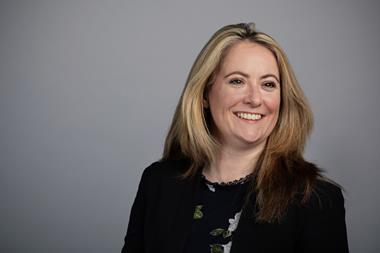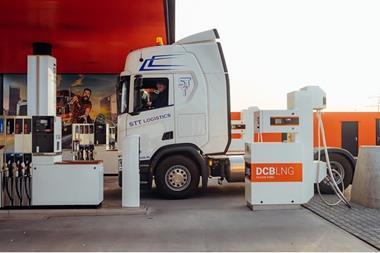
Perhaps you’re in the fortunate position where you’ve just been able to invest a lot of money revamping your site. New tanks, pipework and some the latest very flash pumps, just for starters.
This being 2023, you may have installed a couple of EV rapid-chargers – and if you’re really trying to be as ‘green’ as possible – a large array of solar panels on the canopy roof to power them, as well as to help with your electricity bills.
Of course there’s a brand new shop installation; all gleaming stainless steel, glass and the latest LED lighting, some very tasteful touches of woodwork to cap it all off. And then there’s all of the new electronics: from the pump controllers through a new POS system, to a couple of new PCs or laptops for the back-office and even maybe a few iPads for the staff to use when they’re stocktaking. Very nice. May have cost the best part of a million, but hey, it’s going to last for years, and it does look brilliant.
At some point in the near future you’ll likely be having a conversation with your accountant; probably as soon as he or she is posting all of those very large purchase invoices into your accounting system. Yes, most (if not all) of the costs will go into various capital accounts, not to revenue; by which we mean ’Fixed Assets’ on your balance sheet, as opposed to ‘expenses’ in your current year profit & loss account. And one of the decisions which you, your accountant (and the external auditors, assuming you’re working as a limited company) will have to make is what rates of depreciation to set for the different categories of assets that you’ve bought.
The idea of ‘Depreciation’ is based on the accounting concept of ’Accruals’: you’ve just spent a great deal of money investing in new assets which are expected to generate a return -revenue - over a period of more than one year, possibly for ten or twenty years. The “Accruals” concept says that you should match the expenditure against the expected return over time. In other words, if the asset is going to provide a return for ten years, it would be unreasonable to charge all of the cost to your profit and loss account in the year that you bought it; logically you’d spread that cost over the ten year period that you expect the asset to be in use. So far, so simple. But it can get a little more complicated in the real world.
When it comes to setting Depreciation rates in practice, there are several factors that need to be taken into consideration. You start by having some idea of just how long you expect each category of asset to last: it might be 20 years or longer since the last time your forecourt tanks were replaced, and maybe your new ones came with a 20-year warranty anyway. Great, so say that you’ve just spent £200k on your new tank installation, it’s not unreasonable to spread that cost over 20 years; let’s assume that there’s no realistic prospect of getting anything for those tanks in 2043 (any residual scrap value is likely to be less than the cost of removing them) so you depreciate £200K ‘straight line’ over 20 years. That is a Depreciation rate of 5% per year, giving a charge of £10k per year against the asset. Still very simple.
Next, consider those spanking new pumps that you’ve just installed at a cost of £150k. The manufacturer’s advertising may convince you that they’ll easily last 20 years as well. However, these are things that are subject to more wear and tear than something completely underground; what’s more, if you expect the redeveloped site to generate more customers than before (after all, surely that’s always partly the point of investing in any development?) that wear and tear could be rather greater than you’ve experienced before. And then there’s the prospect of legislative change in future.
Sure, the pumps meet all current and known future environmental and safety legislation; but we’re in 2023 and along with many other countries around Europe the government seems determined to remove petrol/diesel vehicles from the roads as far as possible from the 2030s onwards. Perhaps to comply with another accounting concept (in this case ’Prudence’) you might therefore decide that the realistic working life of the pumps is really only going to be 10 years, and that there might not be much call for used forecourt fuel dispensers in 2033. Cost £150k, economic life 10 years = Depreciation rate 10% per year and P&(L) charge of £15k per year.
Then there are all the new shop fittings. Things like freezer and chiller cabinets (etc) could well be on leases/rental of some sort, rather than bought outright, so we can ignore them for depreciation purposes. But what about all the new flooring, the new-format fascias and display shelving, lighting, etc? Once again, the installers might have assured you that it’ll all be good for at least 10-15 years. And in simply physical terms that may be a reasonable expectation. But hold on a minute. We can (briefly) consider future legislative changes – Health & Safety and/or environmental – but since the new shop presumably complies with current and known future legislation, anything else is basically not quantifiable, so can be ignored.
But then just stop and think: you might have noticed that that the best-looking new shop formats (especially, it seems, on forecourts) look superb when they’re new. Unfortunately they also seem to have a habit of looking absolutely awful, worn and dated just a few years later! Not only that, but if you’ve bought-in to any particular type of ‘franchise’ or ‘format’, how often does that get changed? Some of these formats can be changed as frequently as every five years, and even if you’re not contractually obliged to change again so soon, fashion plays a big part in retail. While the absolute physical lifetime of these assets may be around 15 years, it might be more realistic (and ’Prudent’) to expect to have to replace them in less than 10 years. And therefore set an appropriate depreciation rate.
Finally, look at the fancy new IT systems that you’ve bought. While the new POS system (and all the associated infrastructure) will probably be good for around the same time as your new pumps, the other gear – laptop and desktop PCs, iPads, etc, are a different kettle of fish. There was a time when anyone spending £3k-4K on a network server, or £2k on each fancy laptop would reasonably expect the things to last for four or five years, and set depreciation accordingly. These things may be somewhat cheaper today, but not only do they still suffer wear and tear, they also suffer from technological obsolescence ever-more rapidly: you try to install new software (’apps’) after a year or two, only to find that the machines aren’t up to specification to run it. And it often seems that the build quality of new IT equipment is such that you can only expect the things to work properly for maybe two to three years, maximum – and they’re not built to be ‘fixed’, either! Personally, I know several accountants who now take the view that it’s simply not worth treating any individual piece of new IT equipment costing less than £1k as a fixed asset at all; they simply treat it as an expense in the year of purchase and charge it all to P&(L) immediately.
These are just a few examples of what you should consider when discussing depreciation policies and rates with your accountant; they might well mention a few others, but hopefully you might now understand where they’re coming from.
































